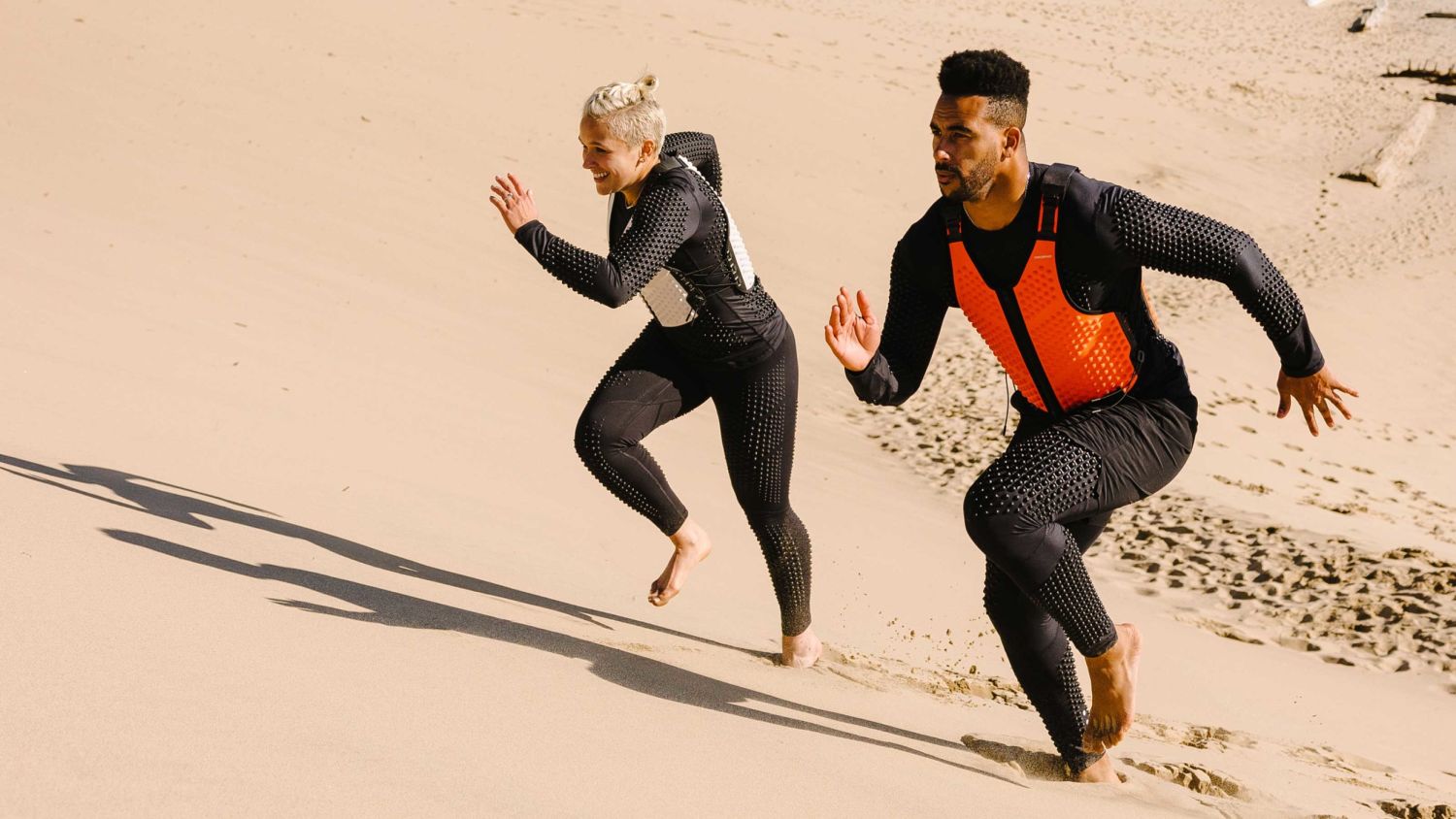A weighted vest is quite a multi-faceted training tool, which makes it invaluable for achieving a range of performance and fitness goals, as well as accommodating personal preferences. A great place to start any fitness journey is to identify the physical capacity or outcome you are wanting to achieve. That way you can focus your time on the training methods that work best to improve that specific outcome.
In this post, I’ll focus on some common training outcomes you can achieve by training with a weighted vest. Knowing everyone will have their own goals and chosen methods, focusing on the outcome you are wanting to achieve will help you better understand how to use your vest to reach that fitness goal. In general, here are some outcomes you can get after with a weighted vest like the OMORPHO G-Vest.
Burn More Calories

This outcome is often a main focal point for general fitness and weight management. To achieve this outcome, simply add the weighted vest to what you are already doing to burn more calories without having to add additional time to your exercise routine.
The extra weight of the vest will increase the challenge of each exercise. Essentially, the weighted vest increases the mechanical work you must do, since you weigh more (albeit slightly), during every lunge, push-up and squat jump. This will, in turn, increase the intensity of the exercise, resulting in greater use of calories during the exercise session. This is a super simple way to get more out of the time you have to work out.
Effort levels are certainly tied to this outcome. You must actually step up your effort to match the increased challenge of carrying added weight, in order to gain the extra benefit of burned calories. If you slow down, don’t go as low with each squat or do fewer push-ups, you won’t see that calorie burn boost.
This is why the lighter, distributed weight of the G-Vest+ is an advantage. In general, a weighted vest should not overload you to the extent that you can’t move similarly to how you move without the vest. That also applies to movement speed, range of motion and general coordination. When in doubt: if your weights are preventing you from moving well, then the added weight is likely too much to be helping you (or the specific movement you are trying to do).
OMORPHO ran a research study where participants completed an 18-minute, bootcamp-style workout with and without the G-Vest. On average, calorie burn was 5% greater with the G-Vest. This was without having any method to ensure participants were working equally hard when they had the G-Vest on. Some individual participants had upwards of 9% greater calorie burn.
Increase Cardiovascular Fitness

As previously mentioned, the added weight of the vest will increase the challenge of the exercise you are doing. With this increased challenge (also termed “overload”), the cardiovascular system must respond to meet the demands placed on the body. Over time, the body will adapt to acquire a greater cardiovascular efficiency for the exercise you are doing. It feels obvious when you take off the G-Vest, as you’re able to perform the same exercise at a greater fitness level.
In general, when you add the G-Vest to an exercise regime that you are already accustomed to, this can be viewed as an incremental overload: a step up in the challenge of that exercise regime. Incrementally or progressively overloading the body is a tried-and-true method to drive performance adaptations. It’s seen as safe because you are not going so hard during an exercise session that 1) You are putting yourself at a high risk of injury, and 2) You are becoming so fatigued that you are making it difficult for your body to recover before the next exercise session.
For example, group exercise devotees may find that over the course of regularly attending classes for months or even years, the challenge diminishes. This is because the body has adapted to the specific coordination and intensity challenges. To continue experiencing fitness improvements, you must increase the training stimulus by increasing the challenge. Ideally, you should increase the challenge incrementally to stay in a safe exercise and recovery zone.
In my next post, I’ll share more outcomes you can work toward with a weighted vest. Stay tuned and subscribe to our newsletter for more updates.




